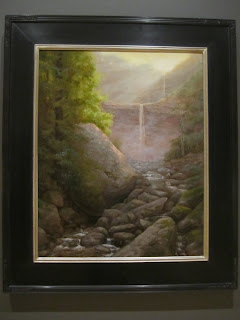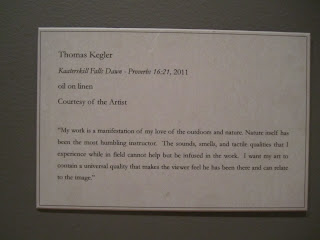Step 2: Questions for your Blog Posting
1. For each video list/discuss the key
concepts you learned.
Greenberg on Art Criticism: An Interview by T. J. Clark: Greenberg shares a number of insights on the relationship between art and history, the nature of value judgments in criticism, and what he calls America’s post-WWII “culture boom.”
The Colonial Encounter: Views of Non-Western Art and Culture: I did not know much of anything about non-western art and culture, but this video looks at the ways in which Western prejudice, ethnography, and art consumption have counteracted authentic things in common with other cultures.
Greenberg on Art Criticism: An Interview by T. J. Clark: Greenberg shares a number of insights on the relationship between art and history, the nature of value judgments in criticism, and what he calls America’s post-WWII “culture boom.”
The Colonial Encounter: Views of Non-Western Art and Culture: I did not know much of anything about non-western art and culture, but this video looks at the ways in which Western prejudice, ethnography, and art consumption have counteracted authentic things in common with other cultures.
2. Do the videos relate to the creation of
your Art Criticism project? If yes, explain how. If no, explain why not.
They do if the viewer’s opinions and views match that of the interviewee. Everyone judges everything in their own way, so regardless of whether us students agree with what was portrayed in these videos or not, people will still get a different impression of something than the next person.
They do if the viewer’s opinions and views match that of the interviewee. Everyone judges everything in their own way, so regardless of whether us students agree with what was portrayed in these videos or not, people will still get a different impression of something than the next person.
3. What is your opinion of the films? Do they add
depth to understanding of art criticism?
They were really quiet first of all, the volume on my computer was up all the way, and I got frustrated going back and re-listening if any background noise was to occur. They were pretty dull to be honest, since the first was strictly a dialogue video, and no visuals to go along with it. What I grasped from it, his opinions and standpoints are interesting and thoughtful, but I felt like I had to concentrate on picking something that interested me. The second video I watched had a little better volume, and had visual examples shown during the narration.
They were really quiet first of all, the volume on my computer was up all the way, and I got frustrated going back and re-listening if any background noise was to occur. They were pretty dull to be honest, since the first was strictly a dialogue video, and no visuals to go along with it. What I grasped from it, his opinions and standpoints are interesting and thoughtful, but I felt like I had to concentrate on picking something that interested me. The second video I watched had a little better volume, and had visual examples shown during the narration.










